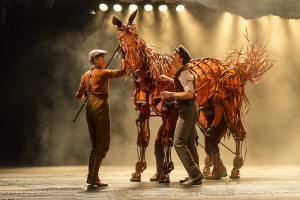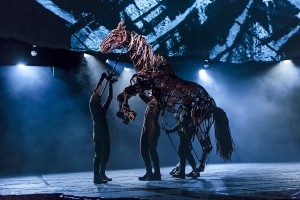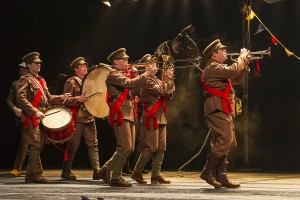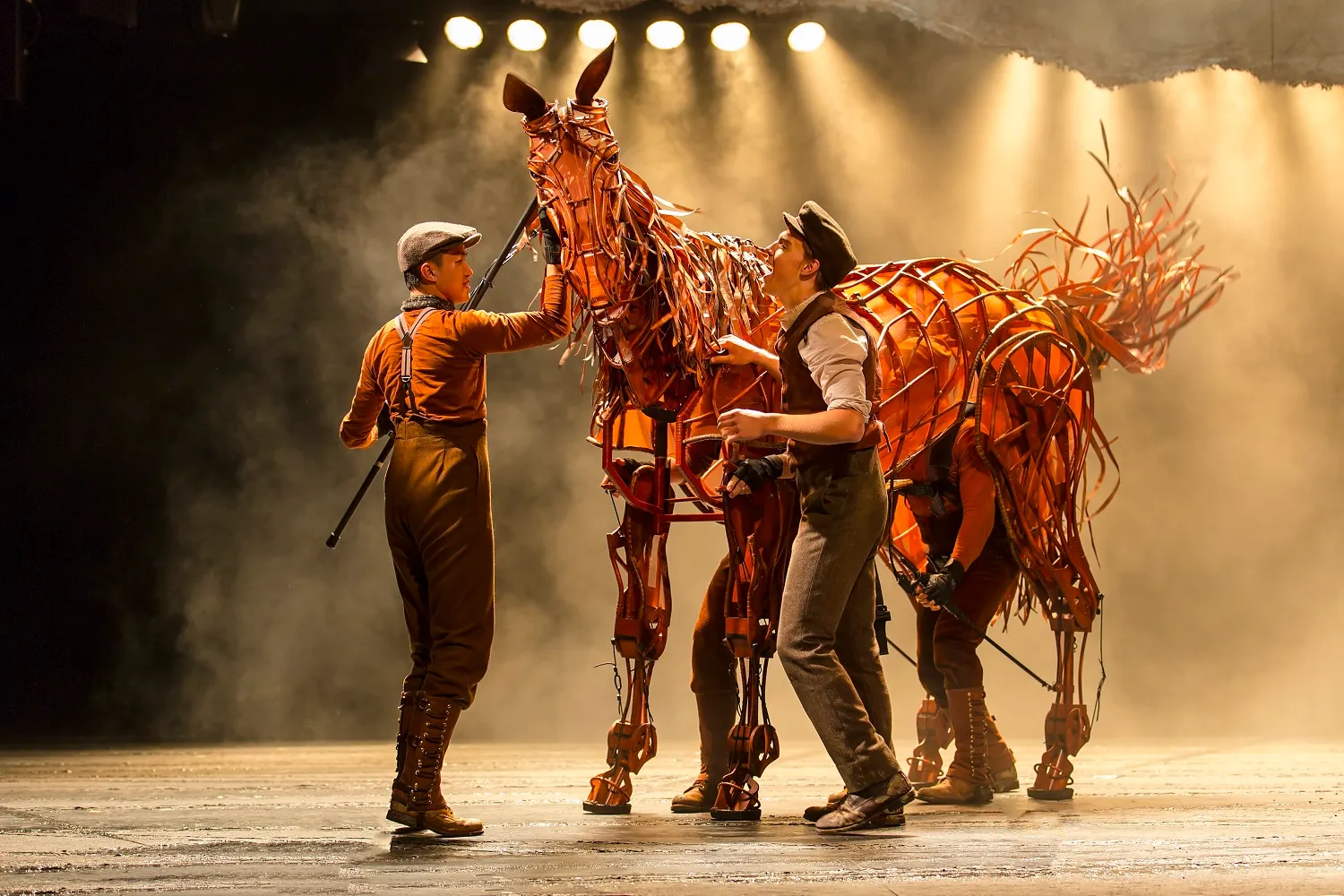
The new SHN production of “War Horse” in San Francisco is all spectacle: amazing lights, sounds, sets, song and staging, as well as some impressive life-sized horse puppets operated by multiple puppeteers. “War Horse” is the epic story of a boy and his horse before and during World War I and tells of how both sides took turns caring for and loving the horse; if you saw the Spielberg film last year, this is a less polished version of the story. The play, however, equals, if not exceeds, the extravagance and drama of the film.
The “War Horse” of the title is Joey, a masterpiece of puppetry, with enough joints and areas of manipulation–and some great voiced sound effects by his three puppeteers (Jon Riddleberger, Patrick Osteen and Jessica Krueger)–to create a real, emoting character. Though the puppeteers are very visible on stage, which is particularly distracting in the foal version of Joey, you get used to ignoring them and watching the horse itself.
Joey, a riding horse, is bought by a farm owner (Tedd Cerveris) whose son Albert (Brian Keane) takes charge of his training and upkeep, including teaching him the impossible task of pulling a plow, a skill that will later save the horse’s life. The burgeoning friendship between Albert and Joey is the slowest part of the play, as it was in the film, and exposes Keane’s weak acting the most, in large part because the dialogue he’s given to work with is so poor.
The play truly gets going when Albert’s father surreptitiously decides to sell off Joey, for a pretty penny, to become the titular War Horse. The stakes for Joey get higher, and the atrocities of war expose humanity in both sides. Albert, in turn, enlists in an effort to find his horse.

Yes, World War I was fought with both horses and tanks, and there’s a devastating scene when the British cavalry storm a German camp and are surprised and obliterated by machine guns. The storming of the camp feels real; multiple horses are on stage, and the devastation is heightened by the sounds, flashing lights and pounding score.
Waiting for the play to begin, the audience can see only an empty stage with a long, white banner present. The banner is used to project backgrounds of the various locations where the play takes place–from the idyllic English countryside, to the battlefield and trenches, to the war-torn French lands–and it works remarkably well, allowing for quick and seamless transitions between vastly different locales.
The sets are all very portable: the fence in the marketplace where Joey is first sold to our hero is held up by the cast but looks entirely real; the farmhouse consists of nothing but a window, door and backdrop, just enough to create the illusion of more; and the supports for the ramp seen in the first act become a great stand-in for the trenches in the second.
The most impressive part of the spectacle is the use of lights and sound. The play has its own score by Adrian Sutton, which is both affecting and effective, and is sung by John Milosich, who acts as our guide. To its credit, the emotional and sometimes harrowing music increases the drama significantly. The terrifying battle scenes–including one with a very large tank that plows through the stage–are often darkly lit, with bright lights used sporadically for shock factor from things like explosions, along with very loud sound effects and scores. These are as sophisticated as you would expect from a polished war film, which is highly impressive.

The play, however, differs from the film: It is all about how to tell this continent-spanning story, with so many characters and so much drama and war, on a stage and make it seem real, frightening, emotional and cohesive. The production does all of this and more, making the highly imperfect script forgivable. This isn’t a play about words; it’s a magical and visceral experience.
“War Horse” runs through Sept. 9 at the SHN Curran Theatre in San Francisco.
